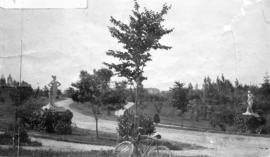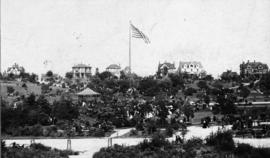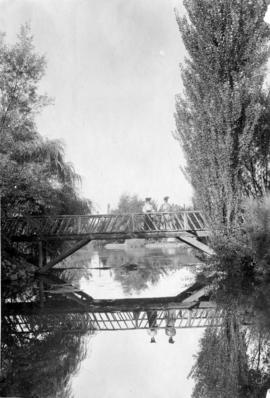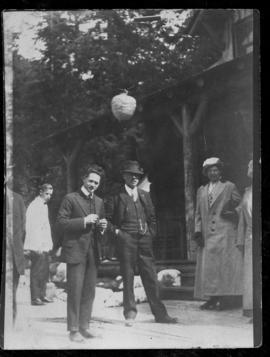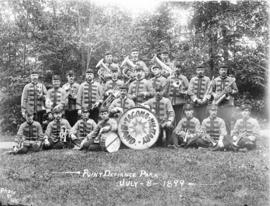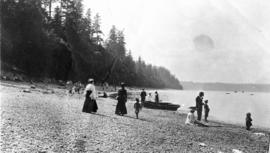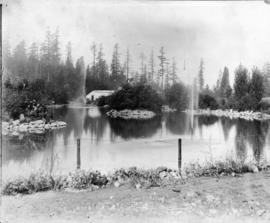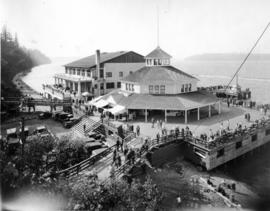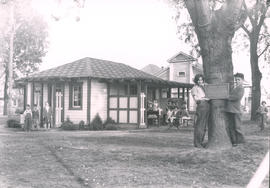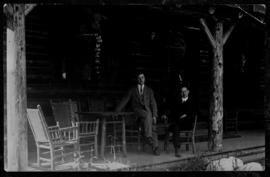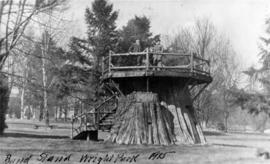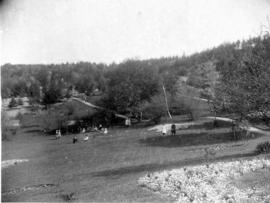- Item
- 1900
Part of General Photograph Collection
ca. 1900. A bicycle leans against a young sapling at the north entrance to Wright Park in this photograph from around 1900. The road curving through the park is Yakima Avenue, which was closed to traffic by the Metropolitan Park Board in 1922. The two "dancing maidens" that stand at either side of the entrance were purchased by Clinton P. Ferry, the "Duke of Tacoma", in Brussels and presented to the city in 1891. Somewhat worse for wear after over 100 years, they still stand at the north end of the park. The tower at the far left is the tower on the old Pierce County Court House which stood at 1012 South G Street. (This image appears on the reverse of BU-10705)
Parks--Tacoma--1900-1910; Wright Park (Tacoma); Sculpture--Tacoma;
